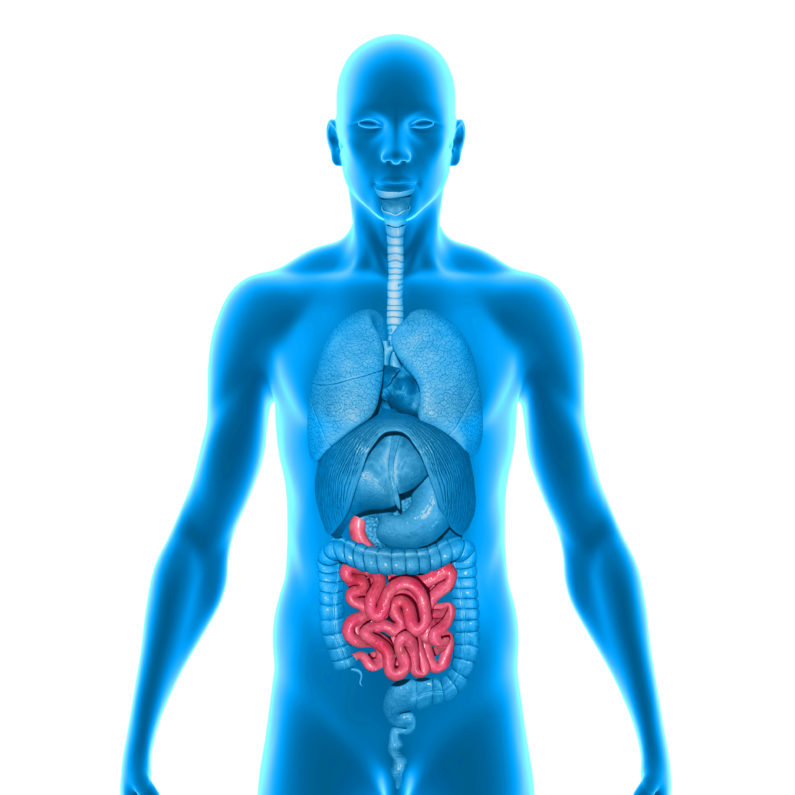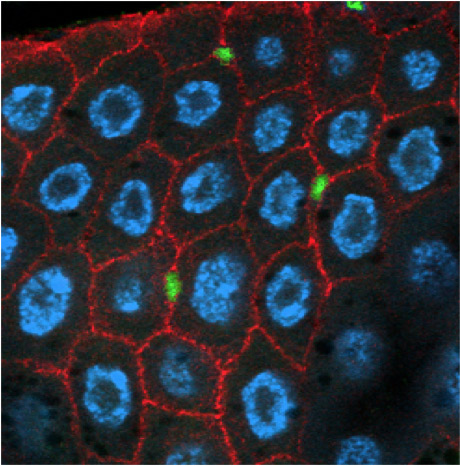Micro-balloons designed by Stanford Bio-X researchers could reveal how the small intestine adapts to dietary load
A tiny micro-balloon that fits inside a fruit fly intestine could help scientists understand the forces or nutrients responsible for signaling the intestine to grow or shrink in response to food. Part of a series on tiny answers to biology's biggest questions.
Our small intestine, among other organs, is malleable; it changes in size depending on how much we are eating. The question has been how the body regulates that growth.

The small intestine grows and shrinks in response to nutrition. A team Stanford Bio-X scientists is creating a microdevice to explore the signals that trigger those changes in fruit flies. (Image credit: 7activestudio / Getty Images)
Two Stanford Bio-X scientists, an engineer and a biologist, are using a balloon-like micro-device to answer that question in fruit flies. They hope to isolate factors that regulate changes in the small intestine’s growth, with potential long-term impacts to human health research.
“Even as fully grown adult animals, our bodies are continually adapting. Understanding how a mature organ senses the need to grow is an important question in biology,” said Lucy O’Brien, assistant professor of molecular and cellular physiology.
An adaptive gut
In both fruit flies and humans, eating stimulates intestinal cells to release a hormone closely related to insulin, which helps cells of the body take up sugar. This insulin relative produced by the intestines activates stem cell division, enlarging the intestines so they can absorb more food. The intestines of a starved fly or human, conversely, will shrink. This process is reversible and repeatable, allowing organisms to adapt to changing environmental conditions. Maintaining a large gut when food is not available is energetically wasteful.
While the role of the insulin-like hormone in regulating intestine growth is understood, what causes its release is not. Prior research has not been able to distinguish whether the hormones are generated as a result of the physical force of intestine stretching or the sensing of nutrients.

Food stimulates cells of the fly intestine to divide, allowing the intestine to grow in response to diet. (Image credit: Lucy O'Brien)
To tease apart the causes, O’Brien has teamed up with Beth Pruitt, associate professor of mechanical engineering. The two received a Stanford Bio-X Interdisciplinary Initiatives Program seed grant for their project, “A gut feeling: Mechano- and chemo-sensory inputs controlling adaptive intestinal growth.”
“Beth’s superpower is developing micro-scale devices, the size of a single cell or chunk of tissue, that can deliver mechanical forces to tissue and look at the response,” said O’Brien.
Tiny balloons
O’Brien and Pruitt have proposed creating a “gut micro-balloon” to study adaptive gut responses in fruit flies. The micro-balloon, a tiny tube-like device, would be inserted into a chunk of fly gut floating in a media bath. Once inserted, the tube could be used to deliver nutrients or to blow up like a balloon, creating pressure inside the gut.
“In the universe of possibilities, the insulin-like signal gets turned on either from the sensing of nutrients, or the mechanical forces of the gut getting stretched out. Using these tools from engineering, we can isolate potential causes and test each one,” O’Brien said.
The grant would help the researchers develop prototypes for the micro-balloon, which they could use in later studies of adaptive growth.
Simple genetics
By using fruit flies, O’Brien and Pruitt hope to first tackle the conceptual problem of understanding how adaptive organ responses work. This research could eventually be applied to humans.
“Fruit flies are awesome because their genome is so much simpler than in mammals. Mammals have many insulin receptors, but fruit flies only have one,” O’Brien said.
This genome simplicity would allow the researchers to easily generate mutant flies. If the micro-balloon experiment suggests a particular nutrient is causing the intestines to release the insulin-like hormone, the scientists can follow up by producing mutant flies lacking the receptor for that nutrient. By seeing the response in mutant flies, the researchers can isolate individual receptors and determine what nutrient causes gut growth.
Ultimately, this research could be scaled up to applications in larger organisms and eventually humans. For example, the findings could be used to stimulate gut growth in order to help people with short bowel syndrome, whose abnormally short intestines limit their ability to absorb nutrients. The research might also be applied in the opposite direction: to slow intestine growth and limit calorie absorption in those with obesity.
Beth Pruitt is a member of the Cardiovascular Institute, the Child Health Research Institute, Stanford ChEM-H and the Stanford Neurosciences Institute.
